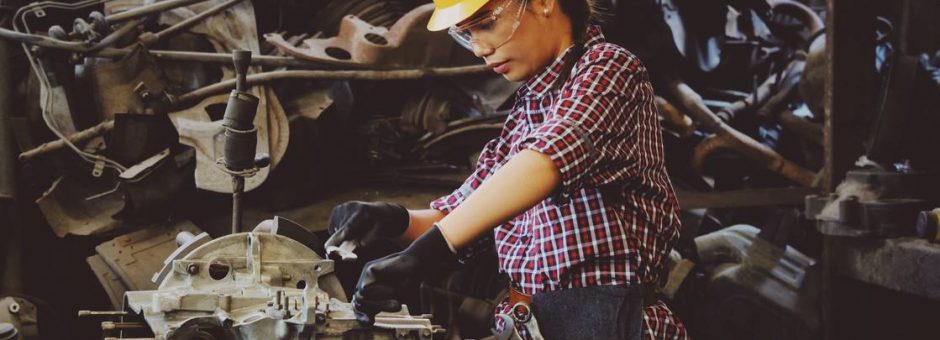Skilled trades and construction are labour markets upon which the success of our economies and our qualities of life are contingent. These roles are crucial to keeping infrastructure up and functioning as well as ensuring the consistent circulation of capital within these industries. By extension, healthy construction and trades industries bolster raw materials industries and sustain the livelihood of dozens of related manufacturing sectors, from commercial to municipal to private use. In all, construction as an industry alone contributes $141.2 billion to Canada’s GDP.1
By extension, the skilled trades within the construction industry are sites of competitive compensation, upward mobility, and high demand for reliable, consistent employees.2 The average wage of a tradesperson, in fact, is double that of retail positions. Further, Ontario is facing the loss of 100,000 tradespeople over the next 15 years as Gen Xers begin to age out of the workforce.3 This means more demand and consistently high wages. So: skilled trades and construction industries are boons for both our national economy and for the individuals which these industries employ.
So what about that labour gap? Well, there’s a pretty obvious fix. But this solution, like many, is easier said than done. The easy part? Hire more women into trades and construction. In Canada, only 4.7% of employees in construction and extraction industries are women.[4] Hiring more women could represent a substantial offset to the impending labour shortage. But then, there’s the hard part of this proposition: retaining those hired female employees in long term working relationships.
Hiring Women into Trades and Construction Isn’t Enough
The number of women in trades and construction, generally speaking, has hovered around 9% for most of recent history; but this figure from the U.S. Bureau of Labour Statistics includes all related administrative roles, which historically have found women overrepresented within its ranks.4 Looking to specific roles, like carpet installation or drywall hanging (landing between 1.9% and 3.7%), indicate that, largely, women are staying off of job sites altogether. The figure of women working on job sites in construction and extraction roles is actually closer to 4.7%.4
Despite Women-In-Trades programs at provincial and federal levels, and institutional specific support, buy-in remains low from women across Canada. Further, the 4.7% of women in trades and construction today are not the same women from ten years ago; there has been industry turnover. Even with women training to work on job sites, many will not stay in those roles in a long term capacity. This undermines the feasibility of resolving labour shortages, because hiring women into empty spots is not enough to keep them. There must be a larger plan in place.
Why Don’t Women Stay in Trades?
Women may well go to a trade school and be hired onto a job site only to then decide not to renew her contract. Why? British Columbia’s 2017 report entitled “Enhancing the Retention and Advancement of Women in Trades in British Columbia: Final Report” sought to appraise and answer precisely this question.5 But, as one might assume, the reality of why women don’t stay in trades, even with training precisely for that industry, is a complicated one.
From an early age, women are consistently underexposed to construction and skilled trade work as career possibilities when compared with young boys.5 This was even more true for our parents’ generation, when a woman working a job site was essentially unheard of. This also means that a woman entering trades or construction today means she is probably the first woman in her family to do so.5 Consequently, she immediately faces two barriers: few women around her in the industry and no familial precedent for such work as a woman.
The experience of working in trades is also different for women. The nature of such industries as bastions of patriarchal hierarchisation persists today and, lacking a critical mass of women in trades and construction, this is a characteristic which remains incredibly difficult to offset or change. As a result, women often find the male-dominated industry to be unwelcoming or even actively hostile, wherein women are excluded from the social capital required to truly succeed and move up through construction industry ranks.5 Further, there is the issue of harassment, as well as verbal or even physical abuse, which many women reported facing during their time on job sites.5 Lacking other women to back her up, she is likely to feel—and perhaps actually be—safer if she looks for another job.
These issues should be managed on site by operations and line managers as well as executive level teams. But herein arises another issue.
Construction and Skilled Trades Lack Organizational Robustness
In the Final Report, the committee wrote of five intersecting modes of barriers which keep women from entering, advancing, or staying in trades and construction. These are Individual (individual beliefs, knowledge, attitudes), Interpersonal (attitudes and behaviours of peers, co-workers, family), Organizational (organizational practices, norms, standards, policies), and Macro-level barriers (social structures, systems, cultural norms).5 These could manifest as a lack of role models, as bullying or harassment, or as discriminatory hiring or compensation practices. None of these issues can be rectified without one key ingredient: robust organizational practices and personnel equipped to holistically address these persistent problems.
As such, when hiring women into the workforce, organizations should also be hiring experts in making the trades and construction industries more equitable, safer places to work.5 This might involve, for example, the implementation and measurement of equitable hiring, training, and advancement practices; developing and enforcing clear policies to deal with bullying and harassment; strengthen health and safety protocols, acknowledging the lived realities of sexual difference; and developing more flexible workplace policies and practices to support women that may also bear the responsibilities of child rearing or caregiving (as again, these responsibilities fall disproportionately on the shoulders of women).5 Ultimately, these suggestions from the Final Report are not only recommendations made to benefit women, but to benefit the entire industry, including its male workers.
When women join the construction and skilled trades industries in numbers, the GDP goes up.6 It is in everyone’s—and we do mean everyone’s—best interest to bring more women into skilled trades and construction fields and to make them want to stay.




